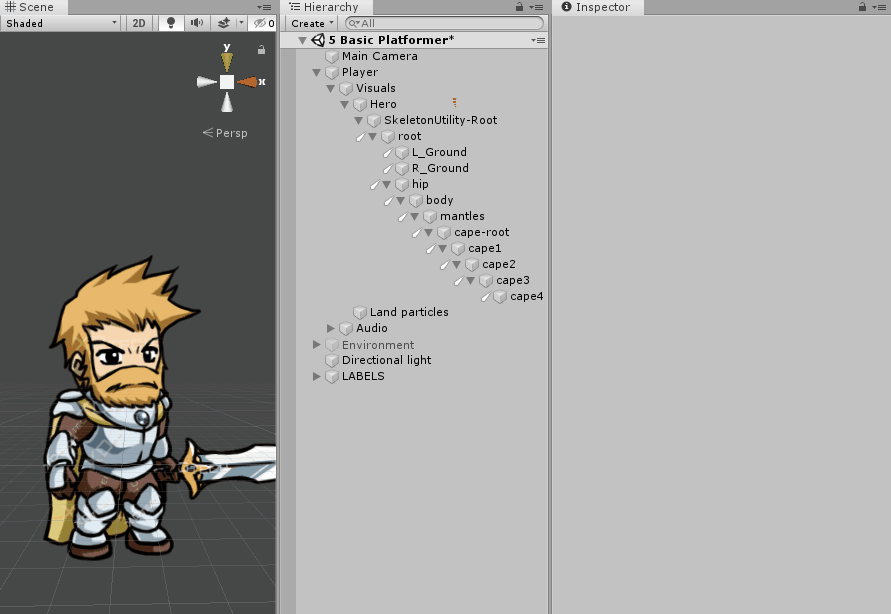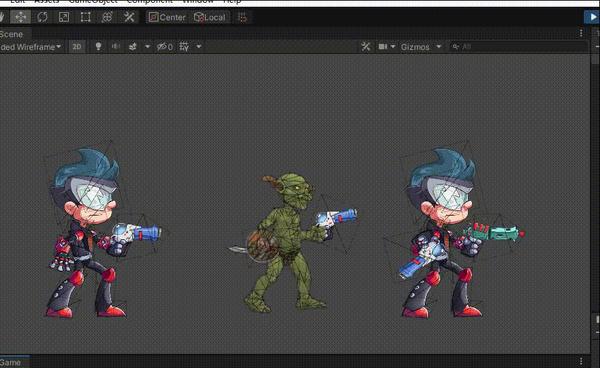


- #Unity using spine2d full#
- #Unity using spine2d code#
- #Unity using spine2d series#
- #Unity using spine2d free#
#Unity using spine2d series#
In Spine, the character does not use a complete picture, but slices each part into a series of small pictures. Spine is not limited to character animation, but character animation is the most common and best example. So please come to the Spine forum to share your experience. We longed for what worked properly and what went wrong. Usually these opinions come from user feedback. While we continue to develop new features, we are constantly improving and optimizing all aspects of the software.

Above you can vote and comment on the development task, and you can also subscribe to it, so that when the development is completed, you will receive an email notification. If you want to learn more about our development plan and progress, please pay attention to the Trello board (a team collaboration tool for managing progress) of the "Spine Animation Editor" and "Spine Runtime Library". You can follow the changelog closely for details. We often issue multiple new versions a week. Supported game engines (English) Development
#Unity using spine2d code#
All source code is provided here and it will be an essential part of your game. The official runtime library is placed on GitHub and authorized to allow Spine users to use the Spine runtime library in their programs. In the program, you can control bones, mix animations, fade in and out, and so on. The Spine runtime provides a set of APIs to directly access bones, attachments, skins, and other animation data. The Spine runtime library allows your game engine to play these animations, as shown in the animation editor.
#Unity using spine2d full#
(the purpose is mainly to make full use of space)Ĭreating stunning animations is only part of the job-you also need to display them in the game. Spine's texture mapping packaging tool has many functions such as stripping blank areas, rotation, automatic scaling, etc. Spine can package pictures into texture atlases, which can improve your rendering efficiency in the game. You can also import skeletons and animations from other Spine projects. Spine finds and imports data files generated by other tools through a path, and it can identify JSON or binary format data that meets the requirements. Spine can also export GIF animations, PNG or JPG sequence diagrams, and AVI or QuickTime video files. Spine can export animations in the project to JSON or binary format files, and they can be perfectly reproduced in the Spine runtime library. You can now use the skeletal movements to control the character's image for bending and deformation. Then the point will move with the bone, and the mesh will automatically deform accordingly. Skinning allows you to attach specified points in the mesh to specified bones. FFD can realize the grid: stretching, squeezing, bending, rebounding, and other functions that cannot be achieved by some rectangular pictures.
#Unity using spine2d free#
Another function of the mesh is to support free deformation FFD and skinning.įree transform FFD allows you to deform the picture by moving the grid points. This will increase the space usage of the final texture atlas, because pixels outside the polygon will be ignored, this optimization is particularly important for mobile devices. The grid allows you to define polygons within the boundaries of the rectangle.



 0 kommentar(er)
0 kommentar(er)
